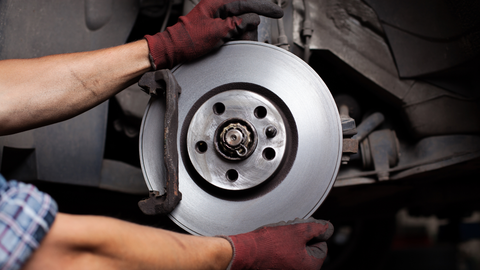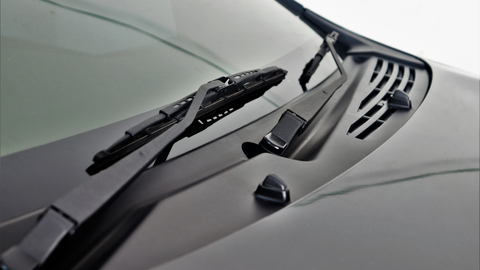With technological advancement, self-driving cars are becoming more accessible and affordable. While full autonomy is still years away, vehicles with semi-autonomous features can drive for short distances and periods. If you plan to take a short self-driving tour in your vehicle, there are some key auto parts you should ensure are in good condition to have a safe and trouble-free experience.
Tires
When embarking on a self-driving tour, conducting proper tire maintenance is critical. Your tires should have ample tread depth and an even wear pattern to ensure optimal handling and traction for your vehicle's sensors and systems. Stability and controllability issues in systems are often caused by underinflated or overinflated tires. Therefore, checking tires for cracks, bulges, or bubbles that indicate a need for replacement is critically important. Furthermore, make sure that your tire size aligns with what is specified for your car to operate suitably in conjunction with self-driving features.

Brakes
Your brakes are another critical system to ensure they function properly before letting the car drive itself. Check that your brake pads and discs/rotors are in good condition with sufficient thickness and not excessively worn. Also, check that your brake fluid is clear and at the correct fill level. The self-driving system relies on the brakes working effectively to slow and stop the vehicle as needed. Any brake issues, like pulling to one side, uneven pad wear, or increased stopping distance, could interfere with autonomous braking functions. So give your brakes a thorough inspection and any needed service before setting out.

Suspension
The suspension system is important for keeping the vehicle's tires in contact with the road surface for optimal traction. Severely worn shocks and struts cannot properly dampen the impacts from bumps and potholes. Before letting your vehicle take control for a self-driving tour, have a mechanic inspect your suspension components for leaks, damage, or excessive play. Any issues that cause the tires to lose contact with the road intermittently could confuse the sensors and disrupt the ride. Check ball joints, tie rods, control arms, and wheel bearings are also in good working order. Minor suspension repairs can ensure a smooth and safe autonomous driving experience.

Fluids
Check that all your vehicle's fluids are at the proper levels before going on a self-driving tour. This includes engine oil, transmission fluid, power steering fluid, brake fluid, and coolant. Low fluid levels could cause overheating or mechanical issues interfering with autonomous functions. Your windshield wiper fluid should also be full, and you may want to add special fluid for camera-based self-driving systems that help keep the sensors clean. Top off all fluids and change/flush as your vehicle manufacturer recommend. Proper lubrication and cooling of moving parts are important for throttle bodies, gearboxes, and sensors enabling self-driving functions.
Lights
All your exterior lights should be functioning properly for a self-driving trip. This covers turn signals, brake lights, taillights, fog lights, and headlights. The lights are used by a lot of semi-autonomous features to convey their intentions and "see" the road. Ensure all bulbs are working and there are no physical cracks or damage. Fogged or clouded lenses can reduce light output and visibility. Consider installing new headlight bulbs if the current ones are dim. The self-driving system relies on light to sense the environment, so you want your lights to be at their brightest. Having one or more lights out could confuse the vehicle and increase the risk of a collision.

Wipers
A properly functioning windshield wiper system is needed for self-driving functions that use cameras and sensors mounted behind the windshield. Check that your wiper blades are in good condition without tears or excessive wear, and press firmly against the windshield for a clear field of view. Top off your wiper fluid reservoir with a cleaning solution that will not streak or leave residues on the glass. To keep the sensors functional, you'll also want to ensure the wipers can quickly clear water from the windshield during rain. Consider replacing old or deteriorated wiper blades before letting the vehicle take the wheel for a short autonomous drive.

Emergency kit
Even for a short self-driving tour, it is a good idea to have some basic items in an emergency kit in case of an autonomous driving malfunction or another vehicle issue. This should include jumper cables in case of a dead battery, a first aid kit with any needed medications, a flashlight, bottled water, and a blanket. Also, consider adding a handheld GPS device as a backup navigation system. While technology has made self-driving vehicles possible, there are still edge cases where failures can occur. Emergency supplies can help you prepare and deal with unforeseen circumstances during your autonomous drive.

Conclusion
In conclusion, while self-driving technologies continue to improve, ensuring your vehicle is properly maintained and ready for an autonomous drive is important. By checking key auto parts like tires, brakes, fluids, and lights and having an emergency kit, you can increase the safety and reliability of even a short self-driving tour. Following the manufacturer's maintenance schedule and addressing any issues proactively will help provide the best experience from your vehicle's autonomous features. So take the time to inspect and service your auto parts before letting the car take the wheel for a self-driving adventure.


